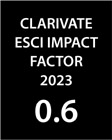Pest megyei közelképek a szövetkezeti átalakulásról
DOI:
https://doi.org/10.17649/TET.10.4.398Absztrakt
The authors of the study paid attention to the transformation of the co-operatives in three small regions of Pest county: In the Zsámbék Basin that is part of the Pilis-Buda Mountains, in the Danube-valley and in the Homokhátság (Sandy Hill Ridge) in 1993- 1996. The cases demonstrated in the study prove that a complicated situation burdened with serious contradictions and disharmonies of interests evolved in the early 1990s, partly because of economic and political decisions and partly because of the penetration of market conditions. In Pest county some processes were more significant in their effects than in other regions of Hungary, at the same time, the regfonal differences of the transitions within the county reflects the same picture as the large regions of Hungary show. The way and intensity of the disintegration of the former structure and the shaping new structure were similar in their processes and results in Transdanubia to the case in the Pilis-Buda Mountains, while in the other two small regions the transitions follow the patterns of the Great Hungarian Plain with either stronger or weaker differences, deriving from the effect of the capital city. In the production sphere examined by the authors, the so-called renewed but actually still productive co-operatives were only stabilised in the Zsámbék Basin region, due to their natural endowments which are more favourable than the average and their high-value and easily sellable estates. In the other two regions with less favourable endowments, stable co-operatives are the rare exceptions, the majority either function at the cost of a radical contraction or started strong differentiation and were transformed into holdings – or they fell into pieces or simply consume what is lelt of their properties. In these two regions the proportions of the private businesses and smallholders are high and the actors of the agriculture, i.e. co-operatives, businesses or individuals, are linked by different connections.
##submission.downloads##
Megjelent
Hogyan kell idézni
Folyóirat szám
Rovat
License
A folyóiratban publikálni kívánó szerzők elfogadják a FELHASZNÁLÁSI ENGEDÉLYBEN részletezett feltételeket.






